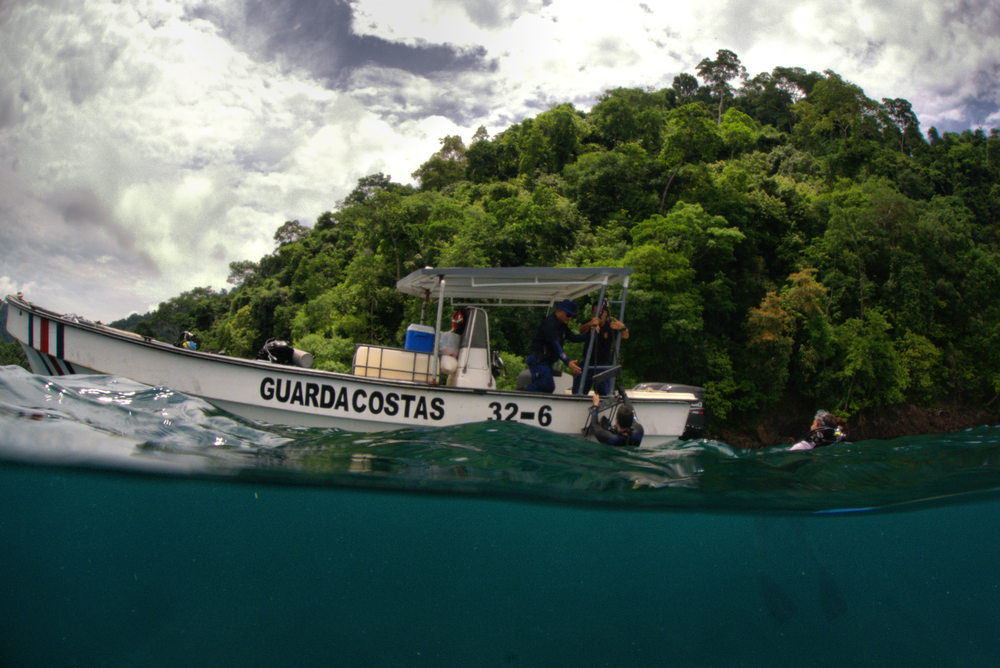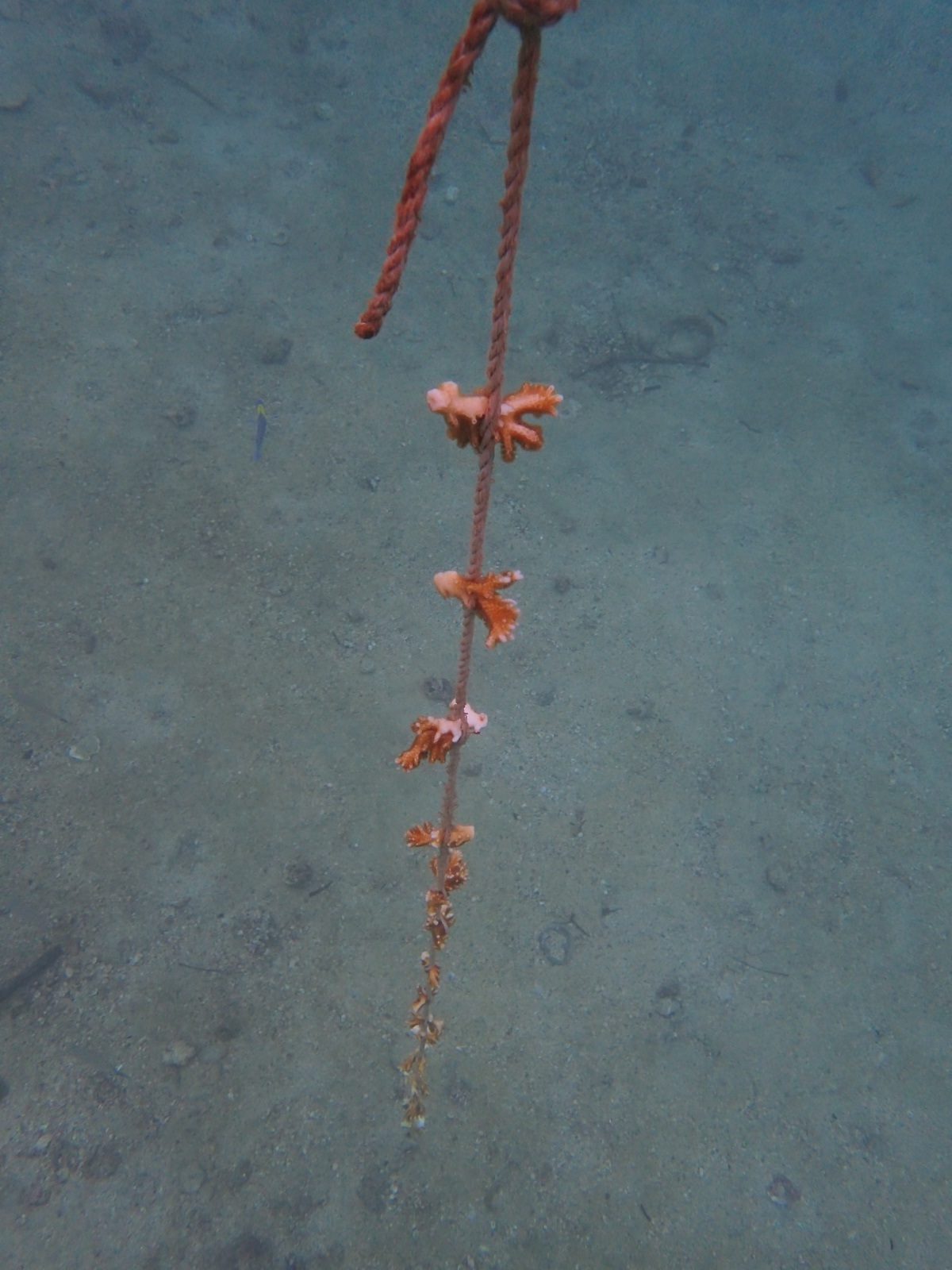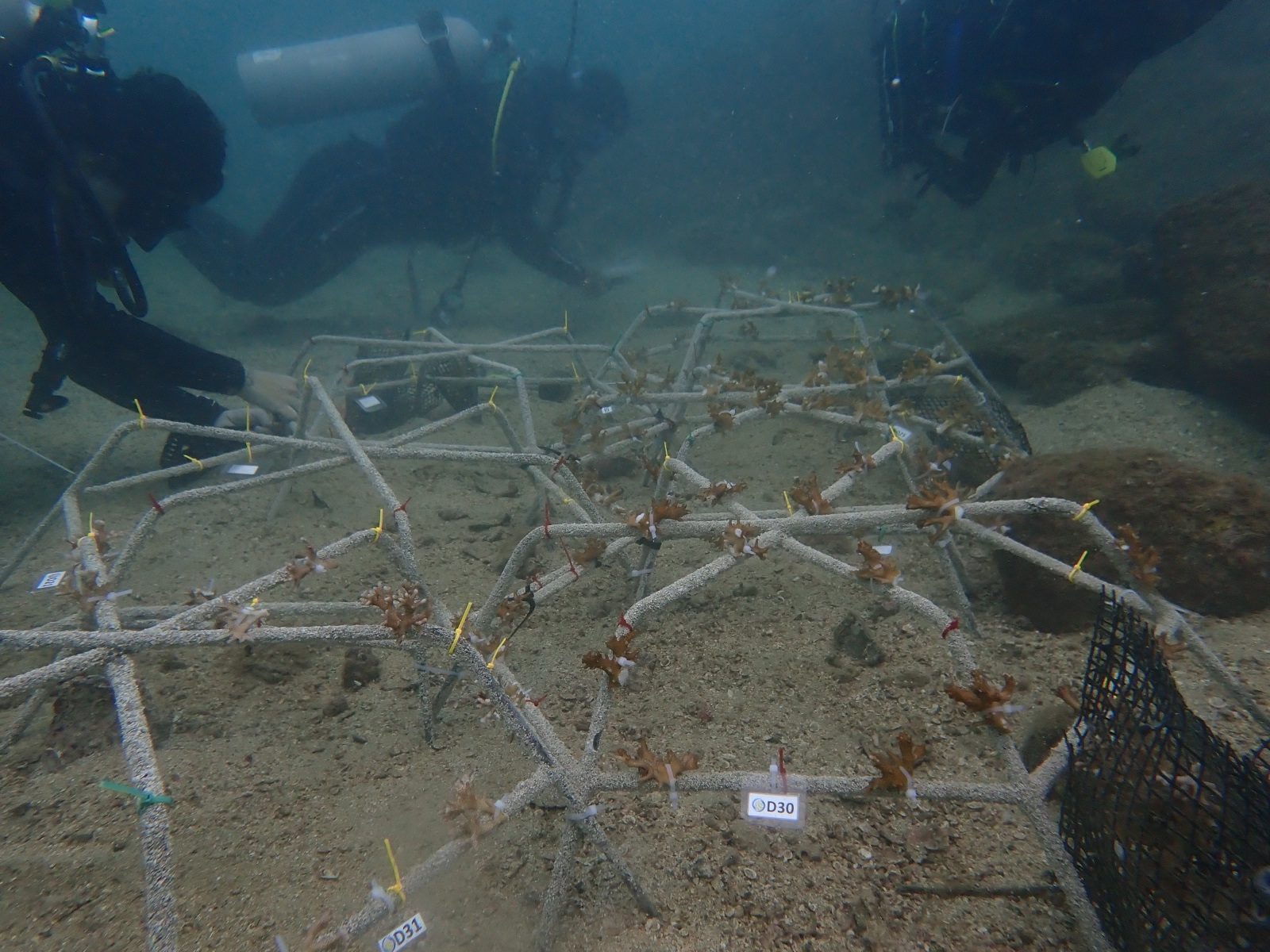
Finding Hope in the Heat
Dr. Joanie Kleypas, Director of Raising Coral Costa Rica, shares her reflections on how Reef Stars are a key asset in the coral restoration toolbox during ocean warming events.
Written by Dr. Joanie Kleypas:
Raising Coral Costa Rica is reestablishing Costa Rican reefs with a holistic approach to sustain the health of the reef ecosystems and the people that depend on them. We can’t stress the people aspect enough – it has been key to our success with restoration on both coasts of Costa Rica.
Another key aspect has been our partnership with Mars Sustainable Solutions, who supported us with funding and patiently trained us to build and implement the Mars Assisted Reef Restoration System (MARRS). The Reef Stars have been great for expanding our work, but even more so, for the corals that thrive on them.
The Challenge
The next few months are likely to be challenging for coral reefs globally. The climate has shifted rapidly from a La Niña or “cool” phase to El Niño or “warm” phase of the El Niño Southern Oscillation (ENSO). The unfortunate truth is that the La Niña that persisted between 2021–2023 has been anything but cool, with ocean temperatures higher than they have been for years. And now on top of this arrives El Niño, which is already affecting coral reefs in many locations in the Caribbean.
We and many others involved in reef restoration head into this year with concern but also determination because we knew from the start that we will have years like this. Part of our determination draws from the confidence we have gained in our experience with the Mars Assisted Reef Restoration System (MARRS). Raising Coral, Costa Rica has come to greatly appreciate the flexibility the MARRS reef stars offer in restoration and in obtaining standardized scientific information. While it is essential to eliminate greenhouse gas emissions, we must simultaneously help sustain coral reefs until we do.
The El Niño Contingency Plan
Once ENSO flipped to the El Niño phase, we shifted our normal restoration plans to focus on distributing coral fragments across a broader array of sites. The plan is rather simple: (1) In both the Golfo Dulce and Caribbean regions, clusters of six reef stars are deployed at a total of five new sites, to expand the geographic and depth ranges of the existing restoration sites. (2) Each cluster (Fig. 1) is fitted with a temperature recorder set at 15 min intervals. (3) Several fragments from each of the known coral donors are deployed on each reef star cluster, using color coded zip ties to track each “donor-type”; that is, fragments that have been propagated from specific donor coral colonies in the wild. (4) Fragments on each cluster are monitored before, during and after the expected heat wave. At several of the reef star sites, we are also suspending fragments across a range of depths using a line suspended vertically.

Coral Fragments distributed across a range of depths
In Golfo Dulce, the work above is focused on Pocillopora because this genus was nearly absent when we began restoration in 2016. In the Caribbean, the focus is on Acropora palmata, a threatened species, and A. cervicornis/prolifera, for which there is but a single known colony in Cahuita National Park.
This El Niño contingency plan helps in two important ways. First, distributing coral fragments across a wider array of sites increases the chances of avoiding catastrophic mortality of any of the donor-types. And second, the temperature data combined with fragment responses will provide important information for future restoration: Which sites experience more favorable conditions during the El Niño? Which donor-types demonstrate resistance to bleaching and/or capacity to recover? We are encouraging other restoration groups in Costa Rica to follow a similar plan at their own sites, and will provide data sheets, temperature sensors (donated by Clean Wave), and training to any who wish to participate in contributing to this opportunity to understand coral response and recovery during El Niño years.

Reef Stars in action
The MARRS reef stars are a great asset to this test. They provide a fast and convenient way to distribute the corals to new sites, but they also provide a standardized environment for the coral fragments, such as depth above the bottom, hydrodynamic effects, and shading.
Ocean warming will likely take some of our corals, but it can’t take the knowledge we’ve gained over the past seven years about how to bring them back.

